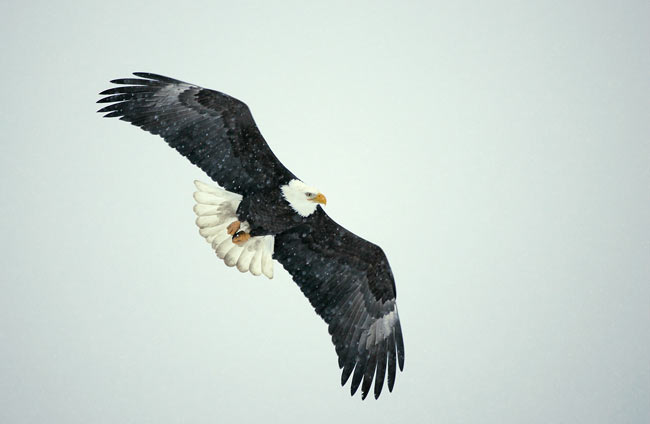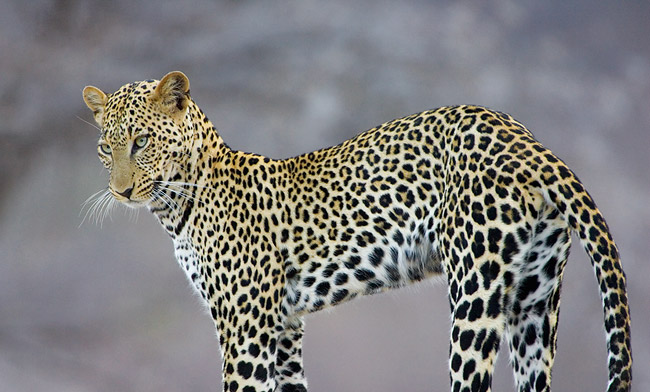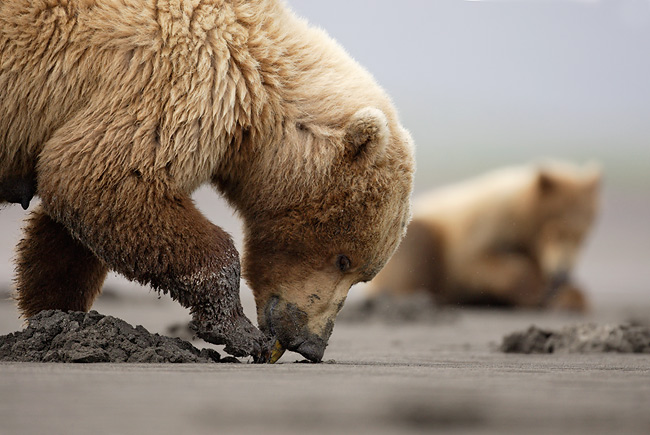

 |
 |
 |
 |
 |
 |
We are trying to develop a community where photographers can come and discuss nature, wildlife and pet photography related matters. We encourage you to enter the forums to share, make comments or ask questions about this interview or any other content of NWP.
This article is Copyright 2005, James Morrissey, and may not, in part or in whole, be reproduced in any electronic or printed medium without prior permission from the author. The images in this article are the property of Artie Morris and have been licensed to James Morrissey and the NWP Photo Forum for the purpose of this interview.
Part II: Artie on Business

(c) Artie Morris
JM: Do you remember your first published photograph?
AM: It was pretty quick - about 1985 or 1986, I think, but I cannot remember the details… I did sell a few single images, but had great success selling photo-illustrated articles soon after that.
I tell folks who are just starting out to skip the often exalted query letter. Man, if no one has ever heard of you, they will throw your query letter in the trash in about 8 seconds. The way to get started is to write a tightly focused article accompanied by 20 good images and get it in front of the right editor. Do that and you have a chance. They want to make their jobs easier. At first I sent out individual images, but, then I thought, “This is ridiculous. Why should I try to sell one picture to fit in someone else’s article when I can sell 6 or 7 pictures to go with my own piece and get paid for both the article and the images?” I started doing some writing and submitted an article to Bird Watcher's Digest. I remember getting a letter from the editor promising to publish it.
JM: So, you did it your own way?
AM: Yes, but I quickly realized that I was going to starve for a while. For two years I checked each issue of BWD to see if my article had been published. It wasn’t. So what did I do? I sent then a second article! They published it almost immediately. Then they published the first one. The nicest part of the story is that the editor, Mary Beacom Bowers, became a great friend. Over the course of a few years, she published more than 20 of my stories, each one with several BIRDS AS ART images.
JM: So you created a resume out of this?
AM: It helped to pay for film, and helped to get my name known. After I got to know Mary she once said, I have never seen anyone with such determination. Sending me that second article after I did not publish the first one for so long was a pretty amazing move. You were so determined.”
JM: How long was it until you were published regularly?
AM: I don't even know if I am published regularly now. I mean that. There are—obviously--lots of great bird photographers out there now. I know that through the book and through our on-line Bulletins that I have had something to do with that, but still, you can see more good stuff on-line than you do in many magazines. I honestly feel that my work would be published much more if photo editors were more aware of the technical and artistic qualities that make a great photograph. I often see stuff in books and magazines that is clearly inferior, yet it still gets published.
JM: Are there factors that prevent 'the best' images from getting published?
AM: Absolutely. I hear from editors all the time that “Johnny Smith sent us a whole bunch of pictures; we had to use some.” I wish that the photographs were chosen solely based on their quality. The thing that rubs me is that people assume that because I am Artie Morris that people are coming to me begging to publish my images. Nothing could be further from the truth.
JM: You were saying earlier that you feel that a lot of inferior work is often published.
AM: Absolutely. Getting published is only a matter of hard work and getting your images in front of editors. People go into the bookstore and pick up a book on insects. They will say, “Oh my God. Look at this book. This guy has 75 pictures of insects and they are all terrible. I have better pictures. I sometimes have the same initial same reaction when looking at bird books, but I always add, “Good for them. They are getting their pictures sold while mine are sitting at home in a box.”

(c) Artie Morris
JM: The trick then is trying to figure out HOW to get them to the markets.
AM: That is part of it. When I was talking to guys about quitting teaching, one of them was Bill Thompson the III, the editor of Birdwatcher's Digest. He said to me, “If anyone can make this happen, it is you. You are smart, funny and have good people skills. You can write. You can teach. And your images are top-notch. You were born to be a bird photographer. I believed him.
My success in part is due to the fact that I have been able to wear many different hats. I wear hats now that I never thought I never could or would, those of an advertiser and a marketer. I NEVER thought I could do that stuff.
JM: Do you feel that in order to make it in the business that you need to market well?
AM: People say, “You are great at marketing.” I chuckle. We are HORRIBLE at marketing. We are very good at self-promotion, but as far as selling the rights to photographs, we do NO marketing. We NEVER contact new markets. The website does not even have a searchable database. We hope to change that over the next year or two after the next book. This is our weakest link. We should be contacting new markets, but we do not. This is our weak link.
JM: With regards to marketing and markets and how you are not marketing at all: if you were just starting out today, how would you go about it (outside of writing the articles as you mentioned earlier)?
AM: I will start off with a story. A month or two ago, a young man came up to me and said, “I am really interested in nature photography and want to make a living at it. Can you give me one really good tip as to how to get started? I answered, “When I started 22 years ago, there were only a few good photographers around. There were only a couple of good magazines and I developed some personal relationships with two or three editors. Now things have changed. There are more photographers and more magazines. It is harder.” The truth is that it wasn’t me answering those questions, that was me asking those questions in 1985 to a guy named Glenn Van Nimwegen. He used to have 20 pictures in a single issue of Audubon Magazine. That is what he told me and I did not believe him. People will give you the whole gloom and doom. You cannot succeed, the market is too tight. I say, “It is only a matter of how hard you want to work. The quality of your images is really secondary.”
To get started, I visited bookstores with a notepad, saw who was publishing bird photographs, and then contacted them by mail. As I said, it is all about hard work. And I would do the same thing today, but would do lots of the same stuff on-line.
JM: How often are you sending out your submissions to other magazines? How often are you published?
AM: We do regular submissions to the birding magazines every month or every other month. Sometimes Jim Litzenberg, my right-hand man, spends several hours on a submission, sends forty images, and not one is used… We also respond to the want-lists of several other magazines like Ranger Rick and National Wildlife, and lots of folks contact us with their photo needs via e-mail. In the last couple of years, we have not had a single field guide project. They used to be good for sales in the $10,000 to $20,000 range, one or two projects a year. Sales of photographs are probably down 15 or 20% for everyone post 9/11, and down lots more than that for some. Oddly enough though, we are selling fewer images but making lots more money. This is because we have diversified our business.
JM: Diversified your business?
AM: I hear many folks complaining that picture sales are way down, griping that they cannot make any money in photography. Teaching accounts for about 1/3 of our income and our mail order business does very well; it has been going berserk lately. My mail order business began after I met a fellow named Walt Anderson about 9 or 10 years ago. He manufactured a flash multiplier for use with telephoto lenses that we wound up calling the “Better Beamer.” We have sold many thousands of Better Beamers to folks all over the globe. In time, we added other products, hard-to find items that I used and depended on every day. We strive to offer our customers great advice and to price everything competitively. Before we knew it, we were selling a whole bunch of stuff, and when we began accepting credit cards over the phone, business really took off.
About two years ago, I took a gamble with a firm developing a big line of bird-related items, key chains, screensavers, and lots more. Two weeks ago we received a royalty check for more than $17,000.

(c) Artie Morris
JM: With your mail order business, it seems that you only sell the stuff that you believe in…
AM: That’s right. I pretty much sell the stuff that I use and depend on every day: Wimberley products, Panning Ground Pods, Hama Double-Bubble Levels, Gitzo 1325 Carbon Fiber tripods, Delkin Flash cards, their CardBus 32 adapters and replacement batteries, and the Mongoose M262 and M363 tripod heads for intermediate telephoto lenses. Plus, we carry my books and sell quite a few prints on line. I try to sell everything for at least a penny less than everyone else - including the big shots like B&H.
JM: I was wondering how successful that part of your business was.
AM: At present it is extremely lucrative. We work hard to fill all of the orders quickly and accurately, and Jim does a great job of doing just that. Many people would call our business practices and book-keeping methods shabby at best… Nothing surreptitious, but if you asked me what percentage of our income comes from each part of the business, I would have no idea. I simply do not care. All that matters to me is the total package and the bottom line.
The real secret to our mail order success has been the Birds as Art Bulletin. The first bulletin was posted in 1999.
JM: They are clever in that they are educational while at the same time advertising your IPTs, your seminars and appearances, and your mail order line.
AM: Yes. A friend from California said to me, “Hey, if you want to sell people a better beamer, don't just say, “Here is a better beamer; buy one! Teach them about flash and explain how to use a Better Beamer.” That is how we market all of our products, by teaching folks how to use the equipment and by telling them exactly how and why I use it. Once I started doing the bulletins, people began to see us as the authority on bird photography. They started e-mailing me for advice. I get dozens of questions each week. And I have tried for more than a dozen years to answer each and every one of them graciously. Sometimes folks want me to re-write the books and Bulletins just for them, which I cannot do, so once a year we send out a note reminding folks to check out a wide range of resources before e-mailing me their questions. I am, however, always glad to answer new and fresh questions relating to all aspects of bird photography.
JM: So the Bulletins have been a key piece of your business success?
AM: Yes, but it has not been just the Bulletins. When folks write asking for advice and receive a prompt personal response from me, they are far more likely to purchase what they need from us than from the next guy. If you sent the 20 biggest names in nature photography an e-mail asking them what lens you should buy, you would receive very few responses from the photographer… Most often you would get a form letter from the office manager saying that the photographer is either unable to answer or is in the field. The personal touch that I have given to the business is paying off. A photographer might say, “I can buy this from B&H or I can buy it from Artie for the same price and he has been answering my questions for the last year and a half.” What would you do?
If you are interested in learning more about Bird Photography from Artie Morris, he will be conducting a seminar in Dallas --
"The Art of Bird Photography; It Ain't Just Birds!" Weekend How-to Seminar
Presented by Photo Road Show
Dallas, Texas: November 5-6, 2005.
For full details, please visit his website: www.birdsasart.com/photoroadshow.htm.
You can also visit his home page at www.birdsasart.com.
As always, we encourage you to come join the community and to be participants in the forums! If you have not registered yet, please
 |
 |
 |
 |
 |